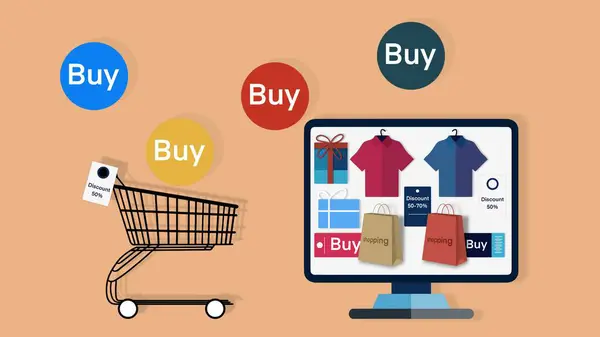When you think of e-commerce, it’s natural to picture bustling metro cities like Mumbai, Bengaluru, or Delhi, with their tech-savvy shoppers glued to their smartphones. But look closer, and you’ll find the real action is happening beyond these metros—in the smaller towns and cities of India.
Tier-2 and Tier-3 cities, once considered “secondary markets,” are now driving the e-commerce boom in ways we couldn’t have imagined a decade ago. From stylish outfits in Indore to cutting-edge gadgets in Guwahati, these towns are reshaping India’s retail landscape, and their growth stories deserve the spotlight.
Small Towns, Big Aspirations
Let’s face it—convenience has a universal appeal. Whether you’re in a metro or a small town, who wouldn’t want a brand-new smartphone or trendy outfit delivered straight to their doorstep? But in smaller cities, it’s more than just convenience—it’s about access.
For years, shoppers in Tier-2 and Tier-3 cities had to travel to metros to buy premium products or settle for limited local options. That’s no longer the case. With just a few taps, people in towns like Coimbatore, Jaipur, and Patna can now access the same brands, deals, and variety as their metro counterparts.
Take Radhika, for instance, a homemaker in Bhopal. She started her small online boutique by selling products on platforms like Meesho. Today, she’s not just shopping online; she’s running her own business and connecting with customers nationwide. Stories like hers are everywhere, and they’re proof of how e-commerce is empowering India’s heartland.
Why Smaller Cities Are Thriving

There are a few key reasons why smaller towns are the new growth hubs for e-commerce:
- Affordable Smartphones and Cheap Data
Thanks to budget-friendly smartphones and pocket-friendly data plans, almost everyone has access to the internet today. In towns where entertainment options are limited, smartphones have become lifelines—not just for scrolling Instagram but for shopping too. - Bigger Dreams, Better Access
Whether it’s a fashion-forward teenager in Surat or a tech enthusiast in Lucknow, people in smaller cities are no longer settling for less. They want the same quality, variety, and brands that metro consumers enjoy—and e-commerce delivers exactly that. - Logistics Magic
Companies like Amazon and Flipkart have worked hard to improve delivery networks, ensuring that even the remotest areas can get packages on time. Faster delivery times and cash-on-delivery options have made online shopping hassle-free for smaller towns. - Speaking the Local Language
Platforms that offer services in regional languages have struck a chord with these audiences. Whether it’s browsing a website in Hindi or receiving customer support in Tamil, personalization goes a long way in making e-commerce more relatable.
How Small Towns Are Changing the E-Commerce Game
1. The Social Commerce Boom
In towns where personal connections matter, platforms like Meesho and GlowRoad are thriving. They allow people to buy and sell through social networks like WhatsApp and Facebook, creating a ripple effect in communities. It’s not just about shopping—it’s about creating opportunities.
2. Fashion with a Regional Twist
Did you know that places like Jaipur and Ludhiana aren’t just consuming fashion but supplying it too? These cities are home to some of India’s largest textile and garment hubs, and e-commerce platforms are helping their products reach a global audience.
3. The Grocery Revolution
Grocery delivery platforms like BigBasket and JioMart are transforming how people shop for everyday essentials. Fresh produce and branded products are now just a click away, even in places where modern retail stores are scarce.
4. Gadgets and Gizmos for All
From smartphones to laptops, smaller towns are major contributors to the surge in electronics sales. Easy financing options and no-cost EMIs have made technology accessible to students, professionals, and families alike.
Supporting Growth
Behind every thriving e-commerce business is a robust workforce powering the operations, from logistics to customer service. As e-commerce expands into Tier-2 and Tier-3 cities, the demand for skilled professionals to manage warehouses, delivery operations, customer support, and digital marketing is skyrocketing.
By focusing on local hiring and skill development, we should ensure businesses can find the right talent to cater to these growing markets. Their expertise in matching skilled professionals with industry needs has helped e-commerce platforms streamline operations and deliver exceptional service, even in remote locations.
The Challenges and Opportunities

Of course, there are challenges. Not everyone is comfortable with digital payments yet, and there’s still some hesitation about returning products. But these are opportunities in disguise. Initiatives like cash-on-delivery, UPI payments, and hassle-free returns are slowly but surely winning people’s trust.
What’s Next?
It’s clear that the next wave of e-commerce growth is coming from the towns and cities that many once overlooked. Businesses that invest in understanding the needs of these consumers, from regional preferences to pricing strategies, will be the ones to succeed.
The rise of Tier-2 and Tier-3 cities in India’s e-commerce story isn’t just about numbers—it’s about a shift in mindset. People in these towns are no longer content to watch the world from the sidelines. They’re stepping up, demanding better options, and shaping the future of how India shops.
For all of us, whether we’re businesses, marketers, or simply consumers, there’s one lesson here: Don’t underestimate the power of small towns. They’re not just riding the wave—they’re creating it.




